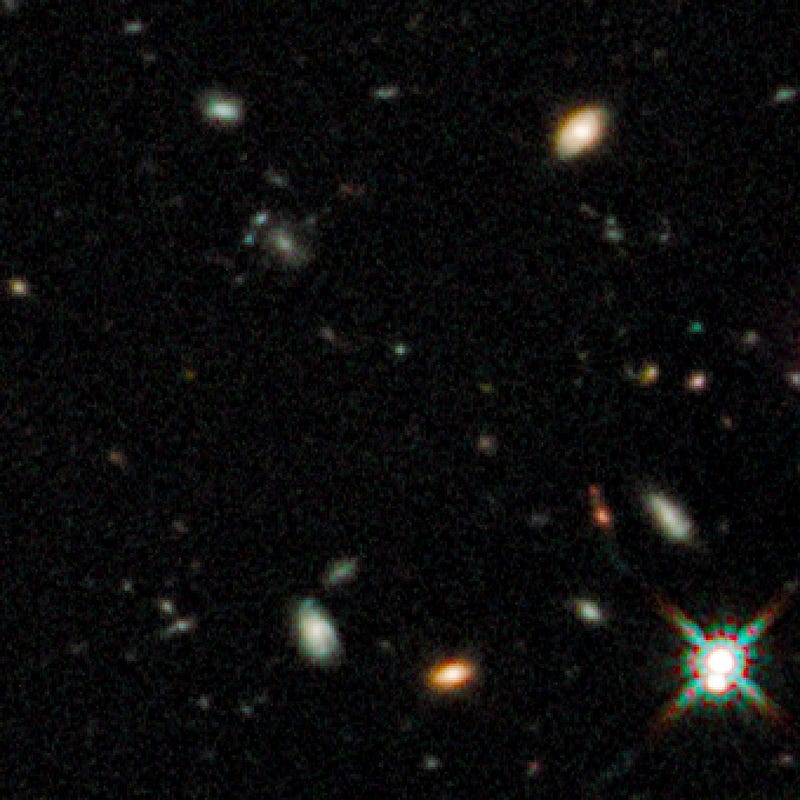The Universe as a Time Machine: A Journey Through Time and Space
Written on
Chapter 1: Understanding the Cosmic Time Machine
The universe serves as a fascinating time machine, with everything we observe being a snapshot of the past.
Light, traveling at nearly 300,000 kilometers per second, does not reach us instantaneously. This finite speed leads to some intriguing implications: everything we perceive is always a reflection of what once was.
Consider our Sun, located approximately 150 million kilometers from Earth. The light from the Sun takes about 8.5 minutes to arrive at our planet. Thus, when we gaze at the Sun, we are viewing its appearance from nearly ten minutes prior. This is an immutable physical constraint; even if the Sun were to vanish right now, we would remain unaware of it for another 8.5 minutes.
As this principle applies universally, the further we look into space, the further back in time we are seeing. For instance, in 1987, when the light from supernova SN 1987A reached Earth, it delivered news of a celestial event that had occurred 160,000 years earlier, at a time when the history of humanity was just beginning. The Large Magellanic Cloud, from which this light originated, is indeed 160,000 light-years away, meaning light from that galaxy takes 160,000 years to reach us.
Yet, even this span is relatively minor in the grand cosmic timeline. If we could somehow observe the Large Magellanic Cloud as it is today, it would likely resemble the image we currently see through our telescopes, which depict a version of it from 160,000 years ago.
However, as we shift our gaze to galaxies billions of light-years away, the narrative shifts dramatically.
Section 1.1: Observing the Distant Past
The farther we peer into the cosmos, the smaller and more irregular the galaxies appear. Utilizing Hubble's maximum observational capacity, we can glimpse ancient galaxies that existed roughly a billion years post-Big Bang.
Understanding what these galaxies look like in the present is an opportunity forever lost to us; we can only view them as they were in their infancy. Their current state, including potential mergers or whether they even exist today, remains a mystery.
Subsection 1.1.1: A Cosmic Perspective

Section 1.2: The Reverse Time Machine
Remarkably, this cosmic time machine operates in reverse as well. If an advanced alien civilization, located five billion light-years away, directed its telescopes toward Earth, it would witness the Milky Way as it appeared five billion years ago—far before the formation of our solar system.
If that civilization were situated twelve billion light-years away and aimed its telescopes in our direction, it would not even see the Milky Way; instead, they would observe its precursor—a small, irregular galaxy bustling with star formation and clusters of young, blue stars that have long since perished.
Chapter 2: The Cosmic Background
There are no unique locations in the universe. When attempting to determine the universe's age, one finds it to be approximately 13.8 billion years, regardless of the galaxy or star system from which the measurement is taken. Observing the night sky from any galaxy reveals cosmic background radiation (CMB), a remnant light from the Big Bang, uniformly distributed with a temperature of 2.725 K. The arrangement of galaxies and clusters would appear similarly homogenous from any perspective.
However, we must consider that our universe operates under the principles of relativity. The consistent perception of the universe's age among observers is due to the fact that no known galaxy moves at a speed significant enough to induce a notable time dilation effect. Even the swiftest galaxies travel at speeds of only a few thousand kilometers per second relative to the CMB.
Let’s consider a hypothetical scenario: A galaxy, one billion years after the Big Bang, interacts gravitationally with other galaxies and accelerates to 99% of the speed of light relative to the CMB. If this galaxy maintained that speed for the subsequent 12.8 billion years, its inhabitants would experience only 1.8 billion years due to relativistic time dilation. Consequently, the universe would seem far younger to them compared to our perspective. Should we observe that galaxy moving at such high velocity, it would present itself almost as a primordial galaxy, vibrant with young blue stars and active star formation.
In summary, the experience of time and the perceived age of the universe are inherently relative, influenced by our speed in relation to any given reference frame.


This video titled "Is Time Travel Possible In Our Universe?" explores the potential for time travel within the fabric of our cosmos, examining theoretical frameworks and implications.
The video "Virtual LIVE@Frost Science: The Universe as a Time Machine" delves into the concept of the universe serving as a time machine, illustrating how light from distant galaxies informs us about the past.